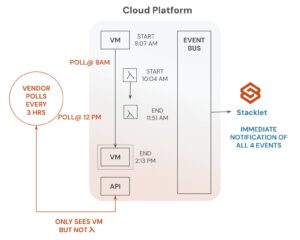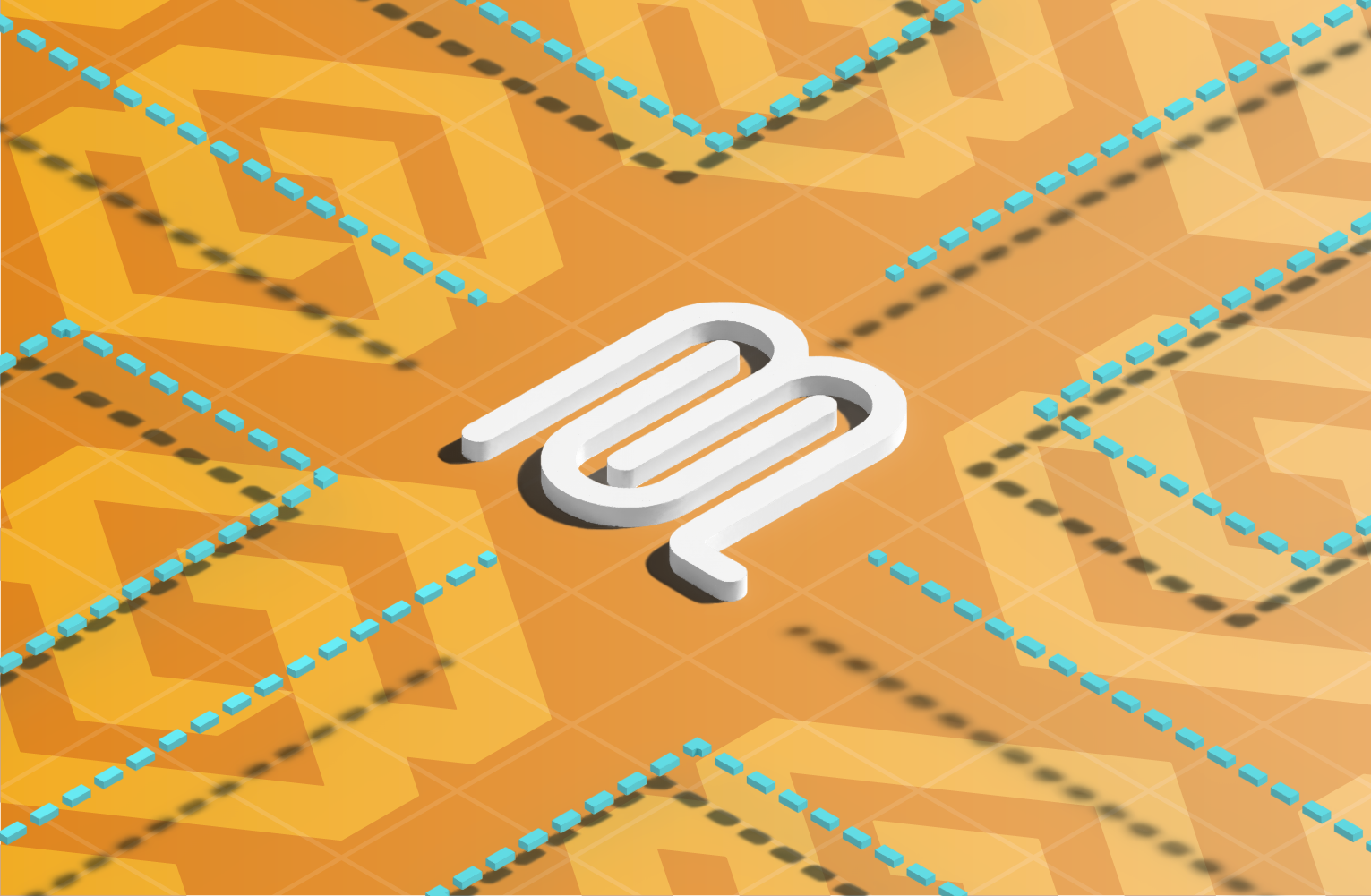Beyond the Scan: Eliminating Blind Spots Across the Cloud Attack Surface
Protecting cloud environments today requires detecting and responding to risks promptly across an ever-expanding attack surface. As organizations rapidly adopt more cloud services – from compute and storage to AI models and serverless functions – they also introduce a growing number of configurations, identities, and dependencies. Each of these can become a potential entry point for misconfiguration or abuse. A single overly permissive IAM policy, an exposed endpoint, or an untagged resource can go from unnoticed to exploited in a matter of minutes – unless you have the visibility to catch it as it happens.
But too often, organizations operate with blind spots – gaps in visibility that can last for hours or more, depending on how often tools scan for changes. In fast-moving cloud environments, resources can appear and disappear in minutes. If you miss that window, you lose the ability to detect threats, trace actions, or ensure compliance. Staying secure means minimizing blind spots and keeping up with changes promptly – as they happen, not after.
Why Do Blind Spots Occur?
As mentioned earlier, while the cloud brings speed and agility, it also introduces complexity – and with it, the risk of blind spots in your security posture. But why do these blind spots exist, especially when so many cybersecurity and cloud security tools are available? Here are a few key reasons:
Using Polling vs. Real-Time Detection: Most cloud security tools rely on API polling to monitor infrastructure. This approach is broadly compatible with multiple cloud providers, but it comes with significant tradeoffs: Polling Frequency vs. Cost. The more frequently you poll, the higher the cost – both in API fees and compute overhead. As a result, many customers configure twice a day to reduce expenses. But that leaves long gaps between checks. If someone spins up a misconfigured instance for just 15 minutes, a 2-hour polling cycle would completely miss it. (Try explaining that to your compliance team.)
Missed Ephemeral Activity: Even with hourly polling – one of the most expensive configurations – transient activity can still slip through. Short-lived serverless functions, temporary IAM changes, or momentary exposure of a public endpoint might only exist for a few minutes. Polling isn’t fast enough to catch these in time. And attackers know it – they actively look for and exploit these narrow windows of vulnerability.
Incomplete Coverage Across Services: Cloud providers are constantly releasing new services and updating existing APIs. But most security vendors can only detect what they explicitly support – which means the vendor’s roadmap limits coverage. If a new AI service launches or a critical logging change is introduced, it might take weeks or months before your CSPM tool can detect or understand it. Until then, you’re flying blind.
Stacklet Delivers Native, Real-Time Detection Across a Broad and Growing Set of Cloud Resources
Stacklet, developed by the original creators of the CNCF’s Cloud Custodian project, takes a fundamentally different approach to cloud compliance and governance. Rather than relying on periodic polling like traditional CSPM tools, Stacklet integrates directly with the native event bus of cloud providers. By observing real-time API activity, Stacklet detects changes instantly – whether it’s the creation of a new resource, a configuration update, or a policy violation.
- Real-Time Asset Inventory: Stacklet’s AssetDB continuously ingests control plane data (e.g., CloudTrail events) to build a live, always-up-to-date inventory of all cloud resources. Every asset, its configuration, and lifecycle changes are captured in real-time, giving teams immediate visibility – critical for catching misconfigurations or compliance violations as they occur, not hours later.
- Event-Driven Policy Enforcement & Remediation: Using a serverless, event-based architecture, Stacklet enforces policies as soon as a relevant change occurs. These policies can trigger real-time, multi-step remediation workflows – such as notifying the right team, tagging resources, or even blocking risky behavior – all tailored to specific risk profiles. This drastically reduces the time to detection and response, helping teams proactively shrink the cloud attack surface.
- Comprehensive and Extensible Resource Coverage: Stacklet supports a wide range of services across multiple cloud providers – and it keeps pace with innovations. Powered by Cloud Custodian’s active open-source community, the platform continuously adds support for new services, resource types, and APIs. Customers can also define custom resources as needed. By inspecting APIs and SDKs directly, Stacklet automatically adapts to the latest cloud definitions, ensuring your security and governance remain current, comprehensive, and future-proof.
Here is an example workflow where a typical polling vendor would only see CPU? But not the Lambda function. Below is a visual of the difference between API Polling and Event Bus integration. Stacklet is notified of new resources being created, deleted or updated as soon as the Cloud Provider posts the event. As a result, Stacklet has full knowledge of Services that are monitored. As noted above, API Polling has windows where short-lived resources may not be detected, depending on the resource lifecycle and the Polling frequency.

Key Benefits of Stacklet’s Real-Time, Cloud-Native Detection
- Rapid Cloud Attack Surge Identification: Stacklet detects changes and events the moment they happen – whether it’s a risky configuration, a new public endpoint, or unexpected resource creation. That means you can spot and stop fast-moving threats before they escalate, not hours later when it’s too late.
- Catch What Other Tools Miss – Even Ephemeral Threats: Many attackers rely on speed: they spin up a resource, exploit it, then shut it down – all before the next scheduled scan. Stacklet closes that gap by detecting and responding to short-lived, high-impact changes in real time – and can automatically trigger remediation workflows to lock down exposure. Spot and stop fast-moving threats before they escalate, not hours later when it’s too late.
- Lower Cloud Monitoring Costs Without Sacrificing Coverage: Because Stacklet uses native event streams instead of aggressive API polling, you eliminate unnecessary overhead while maintaining complete visibility. No wasted API calls. No inflated bills. Just efficient, scalable security.
Cloud environments move fast, and traditional scan-based tools often can’t keep up. This leaves blind spots where misconfigurations and threats can go undetected.
Stacklet gives you real-time visibility, continuous asset tracking, and automated policy enforcement to close those gaps and respond instantly. In the cloud, what you don’t see can hurt you. Stacklet ensures you see it all.
To request a demo please submit form.
Categories
- AI
- cloud compliance
- Cloud Security


